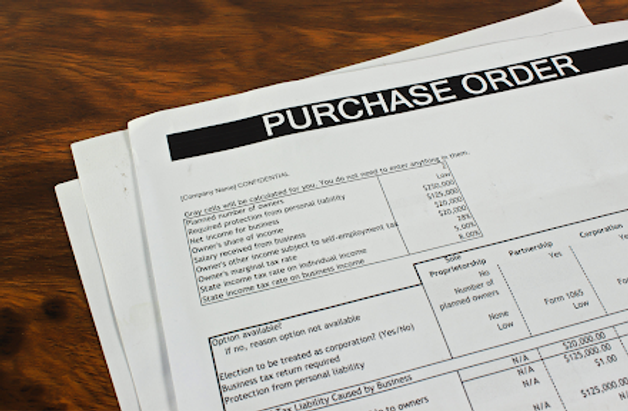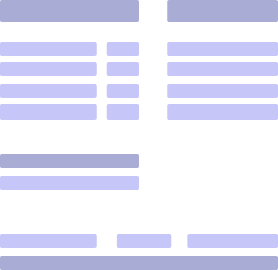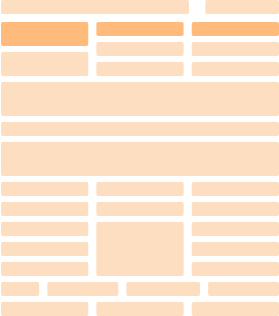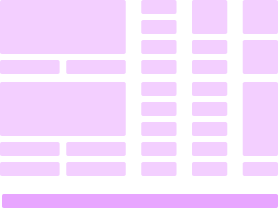What is a Purchase Order, Who is It For, and How Does It Work?

May 23, 2023
A purchase order (PO) is a must-have if you want to keep your business protected in every transaction. Without a legally binding document such as a purchase order to tie your buyers to their payment obligations, it is easy for your business to lose potential sales and waste resources each time a customer makes a purchase.
But how do purchase orders work exactly? If it seems confusing at first, don’t worry—you’ve come to the right place!
This article will break down the significance of purchase orders and explain how they work in detail! So, read on!
Key Takeaways
- A purchase order is a formal document issued by a buyer to procure goods and services from a vendor or supplier.
- Creating and issuing a purchase order aids in documenting transactions, protecting sellers from non-payment, analyzing sales and product performance, budgeting, and equipping one’s business to meet changing market trends and customer needs.
- Purchase orders include the buyer and seller’s name, billing and shipping address, item description, quantity, and unit price, payment terms, etc.
- Buyers create and send a PO to sellers for their goods and services, and sellers send them an invoice to charge a payment.
What is a Purchase Order?
A purchase order definition is a formal document that a buyer sends to a seller whenever they want to request goods and services. It contains a complete and detailed list of the goods that the buyer wishes to purchase.
Purchase orders become legally binding the moment a seller accepts the goods requested by the buyer.
In form, these documents can either be electronic or non-electronic. An electronic purchase order, which is alternatively called “E-Procurement” or “E-Purchase Requisition,” is sent through the Internet and is typically used for online purchases.
Non-electronic POs are paper-based, follow a proper and more professional format, and are considered an essential component of every company's documentation.
Different Types of Purchase Orders
There are various types of purchase orders based on when and where they are used:
- Blanket purchase order. This purchase order is used when procuring goods in bulk or when requesting items that have a concretely defined unit price.
- Contract purchase order. A transactional document that is issued as an agreement between a buyer and seller, especially when the purchase is a continuing commercial engagement.
- Planned purchase order. This type of purchase order applies to long-term purchases that buyers make to a single supplier, as with procuring items and goods that aid in operating businesses.
- Standard purchase order. Similar to a planned purchase order, a standard purchase order is more commonly issued for one-time or irregular purchases.
Why is a Purchase Order Important?

Purchase orders are useful for:
Documentation
A purchase order provides an audit trail for purchases and item requests made by a buyer to a supplier or seller. It serves as the starting point for documenting the sale of a product or service.
Sellers and suppliers review the PO to gain a concrete idea of the scope of the orders. This is important in estimating the resources and manpower needed to produce the requested goods.
Seller Protection
POs are similar to contracts between businesses and their clients. The moment a client, customer, or buyer sends a purchase order to a seller, the latter accepts their obligations to fulfill the necessary payment for the goods and services they want to acquire.
In turn, sellers can use purchase orders as a form of insurance or protection in case of non-payment.
Sales Analysis
Businesses can use purchase orders as a reference for reviewing sales and profit. Specifically, purchase orders provide relevant data on which items and services have the highest number of orders in a given quarter.
As such, sellers can compare high-demand items with poorly-selling goods and assess how to improve their products and generate higher revenue.
Budgeting
Balancing regular business expenses includes preparing a considerable budget to cover the costs that come with producing the business’s goods or acquiring the raw materials needed for the products.
The budgeting process usually goes hand in hand with analyzing the sales and profit of a business.
Market Research
Using all the gathered information and analytics on product performance and profitability, businesses can prepare accordingly for upcoming market and industry trends.
Let’s say you are supplying raw materials or selling retail goods. In that case, you could use the acquired information on your repeat customers and sales to meet client demands and even surpass your competitors.
What Does a Purchase Order Include?
A purchase order must contain the following information for it to be considered a valid transactional document:
- PO number. A reference code that’s distinct to each order and enables a faster and more seamless tracking of purchases.
- PO order date. The date when the purchase order was issued, in accordance with the agreement or contract between the seller and buyer.
- Seller or vendor name. The name of the vendor, seller, or supplier of the goods.
- Billing address. The address linked to the buyer’s credit card.
- Buyer name. The name of the buyer or person who issued the purchase order.
- Shipping address. It refers to the location or area where the goods are to be delivered.
- Item description. This detail includes the item name and the quantity.
- Cost per unit of item. The price of the item or goods per unit.
- Line total. The resulting total of the number of items multiplied by the price per unit.
- Taxes and subtotal. Specifies applicable tax rates and discounts plus the subtotal of all the orders.
- Total price. It refers to the total amount of the goods ordered, with the applicable taxes and discounts added to or deducted from the subtotal price.
- Payment terms. Payment terms include the payment due date, preferred payment methods, and other payment conditions agreed upon by the vendor and buyer.
Is a Purchase Order the Same as an Invoice?

No—a purchase order is different from an invoice. The main difference between a purchase order vs. invoice is that the former is issued by the buyer, while the latter is produced by the seller.
Typically, a buyer sends the purchase order to the seller. In response, the vendor prepares the items enumerated in the document and provides an invoice to the buyer to collect payment from the customer.
An invoice is also akin to an acknowledgment of the customer’s order. A seller fulfills the customer’s request on the purchase order, while the buyer completes the transaction by sending the required payment in exchange for the goods.
How a Purchase Order Works
Here are the key steps that elaborate on how a purchase order works:
#1. Purchase Order is Created and Approved
The buyer creates a purchase order form. The form undergoes review by the procurement officer or personnel. All information included in the purchase order is reviewed for accuracy and correctness before it is sent to the vendor.
#2. PO is Sent to the Vendor, Who Confirms It
The vendor checks the items and product information in the PO. They will also confirm the price per unit, the total price, and the availability of the items in the order.
#3. Customer Receives Ordered Goods or Services
Once all purchase order information has been verified and approved by both the buyer and the seller, the latter then prepares and sends the ordered services or goods to the customer. The goods are sent to the shipping address specified in the PO.
#4. Vendor Invoices Customer for Products or Services
Upon sending the goods, the vendor issues the corresponding invoice for that specific purchase. It is important for the seller to enumerate and describe all payment terms and conditions in the invoice.
The invoice payment terms include the currency and payment methods accepted by the vendor, the amount to be paid for the goods, and the due date for the buyer to send their payment.
#5. Customer Matches the Documents
The customer checks the information in the invoice and sees to it that the terms are aligned with the conditions and agreement that they have with the vendor prior to the procurement of the items or services.
Transparency in both the buyer’s and seller’s share of the bargain is crucial for preventing any potential disputes.
#6. Customer Approves and Pays the Invoice
Upon checking that the details on the purchase order and invoice match, the customer sends the required payment using the payment channels supported by the vendor.
Buyers must ensure that they send payments on or before the due date indicated in the invoice. Aside from sending payments in exchange for their purchase, fulfilling the amount due for their order is also part of their obligation as a customer.
#7. Purchase Order is Closed
The vendor receives the payment and confirms to the customer that the payment was sent to them successfully. Receiving the payment signifies that the transaction is complete, and the purchase order is, therefore, closed.
Final Thoughts
Every exchange between a buyer and a vendor needs proper documentation, regardless if it involves a big or small purchase or a recurring or one-time order. If you are a vendor, you need assurance that you get paid properly in exchange for your services.
Similarly, your customers are also careful with where they spend their money and the sellers or suppliers they choose to do business with. Formal documents such as a purchase order enable buyers and sellers to meet halfway and hold each other accountable for their share of responsibilities in completing the transaction.


